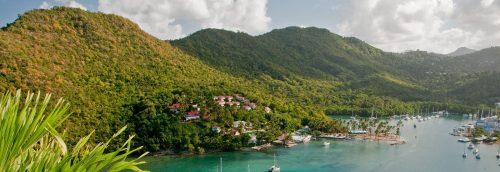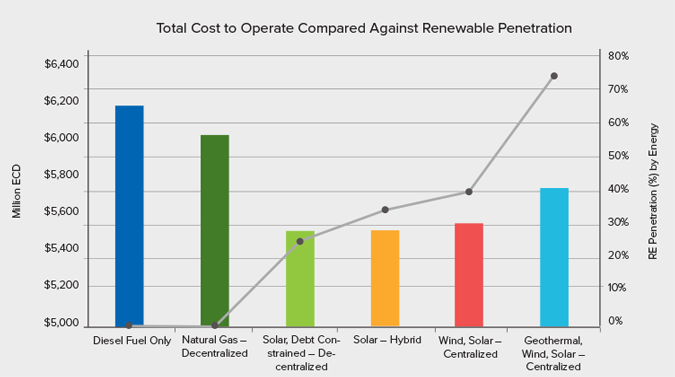
Article | 2016
Saint Lucia Case Study
Energy systems that incorporate renewables can lead to a lower cost system.

WHY IT MATTERS
Developing a National Energy Transition Strategy requires focused, adaptive, and visionary leadership. Through the support of LUCELEC and the GoSL, the NETS charts a pathway toward a future Saint Lucian energy system—one of lower cost, continued reliability, and increased energy independence. This vision applies specifically to Saint Lucia, but the process and findings apply across the Caribbean region and build upon specific projects currently underway. The leadership of all parties in Saint Lucia provides a guiding light for other island communities seeking an energy transition, and the multi stakeholder approach shows the power of collaboration. Millions of dollars have been spent on island nations to help them select, analyze, and finance cost-effective energy solutions. Millions more are earmarked to ensure these systems are compatible with combating climate change. The results of the NETS process demonstrate that comprehensive planning combined with projects to capture the opportunity are a more powerful approach to helping islands transition their energy systems than projects alone. The approach can be scaled to many island nations with the support of the donor community and a willingness of those engaged in the process to create national energy strategies that will benefit these islands for years to come. Lastly, the process provides guidance to aid agencies, project developers, and efficiency companies, allowing them to put their efforts to best effect. The RMI-CWR and CCI collaboration demonstrates that bringing together the right level of collaboration can very quickly deliver real results. Reproducing the approach in other islands around the globe can help steer millions of dollars into de-risked renewable energy projects and infrastructure improvements to provide the highest impact for each dollar invested and accelerate the transition to sustainable and cost-effective energy systems.
